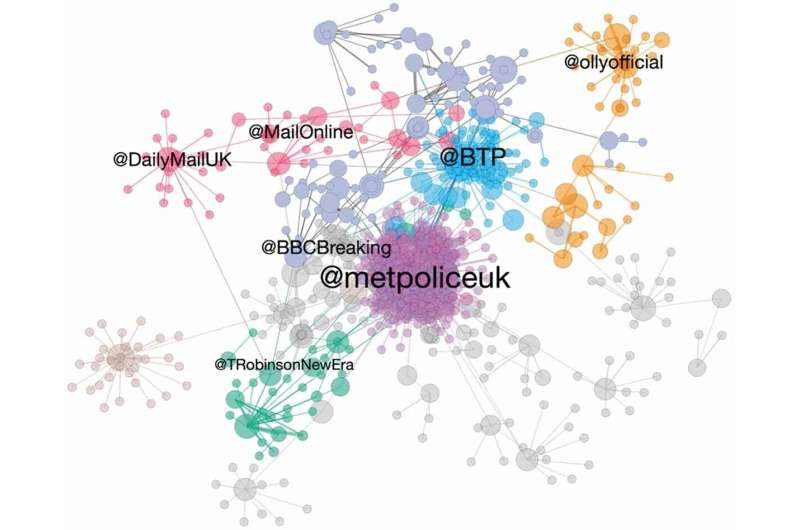Risk of social media creating ambiguity in acute crises

In acute crisis situations, social media can play a crucial role in rapidly disseminating vital information. But there is also a risk that false or outdated facts are spread, causing unwarranted fear or panic. In a new study, Moa Eriksson Krutrök, Associate Professor of Media and Communication Studies, and Simon Lindgren, Professor of Sociology, both at Umeå University, investigated how information about a suspected terrorist attack on the London Underground in 2017 was spread via Twitter. The terror alert, which created uncertainty among the public, soon turned out to be false. But by then it was already too late, alarming reports were spreading like a digital wildfire.
"Social media information flows do not directly follow a logical structure. Social media mixes witness accounts with hearsay, assumptions, and perceptions about these crises, and it can be difficult to reach out as well as take into account new information," says Moa Eriksson Krutrök.
Risk of digital wildfires
The false terrorist alarm the researchers looked at saw a surge in tweets with the hashtags #oxfordstreet and #oxfordcircus, both of which were heavily used during the event. In the first hour after the alert, as many as 2,750 tweets per minute were published.
"The recommendation system of the platforms themselves, supported by algorithms, can contribute to biases in the flow of information. These algorithms help to tailor information to the individual user, but in a crisis, you may need the most up-to-date information rather than the most personalized. As old and new information is shuffled around and spewed into our different feeds, it's difficult for social media users to clearly understand the developments of the event and get an understanding of the whole picture," says Moa Eriksson Krutrök.
The researchers were able to see that the way the platforms worked, combined with the way users acted, indirectly contributed to the creation of so-called "digital wildfires" of information. This means that the spread of information works so fast that it becomes unmanageable and can reach a large number of people very quickly.
"Such wildfires can be difficult to extinguish. Platforms can moderate the content as much as possible, but when thousands of tweets a minute are involved, it is more difficult to verify the information. Even information from credible official sources can create uncertainty about the course of events, for example if it is vague or written at a certain stage when you are not yet sure of all the elements of the development of events," says Moa Eriksson Krutrök.
Use social media, but with caution
Despite the risks of spreading false information, Moa Eriksson Krutrök believes that social media plays an important role in crisis situations. However, she believes that all users need to be even more critical of their sources during a crisis, especially when accessing information via social media.
Social media allows more people to participate in information flows in a way that has not been possible before. But because social media platforms are made up of a huge number of actors, the dissemination of information can be potentially unmanageable, and it can be difficult to know whether updates are true or false.
Even though misinformation can spread via social media, it is far from always malicious. Instead, the researchers say, it is difficult even for witnesses to interpret a situation while it is happening. The false terrorist alarm they studied included witness statements that later turned out not to be true.
People hiding in shops along Oxford Street thought they heard shots being fired, but it was later confirmed that there were no perpetrators, and no weapons, at the scene.
There are technological solutions that Twitter can apply to reduce the spread of information during crises, including limiting the use of retweet functions.
"This was tried, for example, during the 2020 US elections and could also be used in connection with terrorist alerts," says Moa Eriksson Krutrök.
More information: Moa Eriksson Krutrök et al, Social media amplification loops and false alarms: Towards a Sociotechnical understanding of misinformation during emergencies, The Communication Review (2022). DOI: 10.1080/10714421.2022.2035165
Provided by Umea University




















